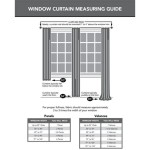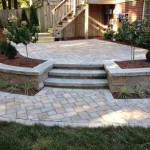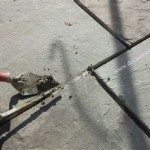How to Seal a Concrete Patio: Protecting Your Outdoor Living Space
A concrete patio offers a durable and versatile surface for outdoor living, providing a space for relaxation, entertainment, and various activities. However, concrete, despite its inherent strength, is porous and susceptible to damage from the elements, chemical spills, and general wear and tear. Sealing a concrete patio is a crucial step in preserving its appearance, extending its lifespan, and simplifying its maintenance. This article provides a comprehensive guide on how to effectively seal a concrete patio, covering the necessary preparations, sealant selection, application techniques, and important considerations for achieving a long-lasting and aesthetically pleasing result.
Understanding the Benefits of Sealing Concrete Patios
Sealing a concrete patio offers a multitude of advantages that contribute to its long-term health and visual appeal. Protection from moisture damage is a primary concern. Concrete's porous nature allows water to penetrate, leading to freeze-thaw cracking in colder climates. When water freezes within the concrete, it expands, creating internal pressures which eventually cause cracks and surface deterioration. A sealant acts as a barrier, preventing water from entering and mitigating this risk.
Another significant benefit is the protection against stains and spills. Everyday patio activities often involve food, drinks, and other substances that can stain concrete. Sealants create a protective layer that prevents these spills from penetrating the surface, making cleanup easier and preventing permanent discoloration. Furthermore, sealants can resist the damaging effects of chemicals, such as de-icing salts, which can accelerate concrete deterioration. By creating a chemical barrier, sealants help preserve the integrity of the concrete structure.
Finally, sealing enhances the appearance and longevity of the patio. Sealants can provide a variety of finishes, from matte to glossy, allowing homeowners to customize the look of their patio. They also help to protect the concrete from UV damage, which can cause fading and discoloration over time. By preventing deterioration and maintaining its appearance, sealing extends the lifespan of the concrete patio, saving homeowners money on costly repairs or replacements in the long run.
Preparing the Concrete Surface: A Crucial First Step
Proper preparation of the concrete surface is arguably the most critical step in the sealing process. A clean, dry, and properly prepared surface ensures optimal sealant adhesion and performance. Failure to adequately prepare the surface can lead to premature sealant failure, resulting in peeling, blistering, or inadequate protection.
The first step is thorough cleaning. Remove all debris, dirt, leaves, and other loose materials using a broom or leaf blower. Next, clean the patio with a concrete cleaner or degreaser to remove any oil, grease, or stains. For stubborn stains, a pressure washer may be necessary. However, exercise caution when using a pressure washer, as excessive pressure can damage the concrete surface. Use a wide fan nozzle and maintain a safe distance from the surface to avoid etching or pitting.
After cleaning, inspect the concrete for any cracks or damage. Small cracks can be filled with a concrete crack filler or patching compound. Larger cracks may require professional repair. Allow the patching compound to cure completely according to the manufacturer's instructions before proceeding. Once the repairs are complete, the surface must be etched. Etching opens the concrete pores, allowing the sealant to penetrate and bond effectively. This can be achieved using a muriatic acid solution or a concrete etching product. Always follow the manufacturer's instructions carefully when using etching chemicals, and wear appropriate protective gear, including gloves, eye protection, and a respirator.
After etching, thoroughly rinse the concrete surface with clean water to remove all traces of the etching solution. Allow the concrete to dry completely before applying the sealant. The drying time will vary depending on the weather conditions, but it is generally recommended to wait at least 24-48 hours. Test the concrete for dryness by taping a plastic sheet to the surface. If condensation forms under the plastic after a few hours, the concrete is not yet dry enough to seal.
Selecting the Right Concrete Sealer
Choosing the appropriate concrete sealer is essential for achieving the desired results. Different sealers offer varying levels of protection, durability, and aesthetic finishes. The selection should be based on factors such as the patio's exposure to the elements, the type of traffic it receives, and the desired appearance.
Acrylic sealers are a popular choice for concrete patios due to their affordability and ease of application. They provide good protection against water and stains and are available in a variety of finishes, including matte, satin, and glossy. However, acrylic sealers are not as durable as other types of sealers and may require more frequent reapplication. They are also susceptible to damage from hot tires and some chemicals.
Epoxy sealers offer excellent durability and chemical resistance. They are ideal for high-traffic areas and patios that are exposed to harsh chemicals, such as de-icing salts. Epoxy sealers typically provide a glossy finish and can be tinted to add color to the concrete. However, they can be more difficult to apply than acrylic sealers and may require professional installation.
Polyurethane sealers are another durable option that provides excellent abrasion resistance and UV protection. They are often used in commercial applications but are also suitable for residential patios. Polyurethane sealers offer a range of finishes, from matte to glossy, and can be used over epoxy sealers to provide added protection and UV resistance. They are more expensive than acrylic sealers but offer superior performance and longevity.
Penetrating sealers, such as silane and siloxane sealers, penetrate the concrete surface and create a hydrophobic barrier that repels water. They do not alter the appearance of the concrete and are ideal for those who want to maintain a natural look. Penetrating sealers are highly durable and long-lasting, but they do not provide as much protection against stains as film-forming sealers. They are often used in conjunction with a stain-resistant topical sealer for optimal protection.
When selecting a sealer, always read the manufacturer's instructions carefully and choose a product that is specifically designed for use on concrete patios. Consider the climate, traffic levels, and desired appearance when making your decision. It is also advisable to test the sealer on a small, inconspicuous area of the patio before applying it to the entire surface to ensure that you are satisfied with the results.
Applying the Concrete Sealer: Techniques and Best Practices
The application of the concrete sealer is a critical step that requires careful attention to detail. Following the manufacturer's instructions and using the appropriate application techniques will ensure optimal sealant performance and a professional-looking finish.
Before beginning the application, ensure that the concrete surface is clean, dry, and free of any debris. Choose a day with favorable weather conditions. Avoid applying sealer in direct sunlight or during periods of high humidity, as this can affect the drying time and the quality of the finish. The ideal temperature range for applying most sealers is between 50°F and 80°F.
Apply the sealer using a roller, brush, or sprayer, depending on the type of sealer and the size of the patio. When using a roller, choose a high-quality roller cover that is designed for applying sealers. Apply the sealer in thin, even coats, overlapping each pass slightly to ensure complete coverage. Avoid applying too much sealer in one area, as this can lead to pooling and uneven drying.
When using a brush, choose a brush with synthetic bristles that are resistant to the solvents in the sealer. Apply the sealer in long, even strokes, following the grain of the concrete. A sprayer can be used for large patios or for applying penetrating sealers. Use a low-pressure sprayer to avoid creating overspray. Apply the sealer in a consistent pattern, overlapping each pass slightly.
Most sealers require multiple coats for optimal protection. Allow each coat to dry completely before applying the next coat, following the manufacturer's instructions for drying time. Inspect the surface after each coat to ensure that there are no missed spots or areas with uneven coverage. After the final coat, allow the sealer to cure completely before allowing traffic on the patio. The curing time will vary depending on the type of sealer and the weather conditions, but it is generally recommended to wait at least 24-72 hours.
Proper ventilation is essential during the application and curing process. Open windows and doors to allow fresh air to circulate, and wear a respirator to protect yourself from inhaling the fumes. Clean up any spills or drips immediately with the appropriate solvent. Dispose of used application materials properly, following local regulations. After the sealer has cured, inspect the patio for any imperfections or areas that require touch-up. Address any issues promptly to prevent further damage.
Sealing a concrete patio is an investment that can significantly enhance its appearance, durability, and longevity. By following these guidelines and taking the time to prepare the surface properly, select the right sealer, and apply it correctly, homeowners can enjoy a beautiful and protected outdoor living space for years to come.

How To Seal A Concrete Patio

Why You Should Seal Your Concrete Driveway Or Patio Gleam Team

Sealing A Concrete Patio What S The Best Sealer Network

How To Seal Concrete The Right Way Project Summary Bob Vila

How To Seal A Concrete Patio Simple Weekend Project Tools In Action Power Tool Reviews

Seal Around Base Of Home And Concrete Walks Hometalk

Stamped Concrete Sealing Wow

Sealing A Concrete Patio What S The Best Sealer Network

Concrete Sealing Hero

Do I Need To Fill This Gap Between The Foundation And Patio Hometalk
Related Posts








